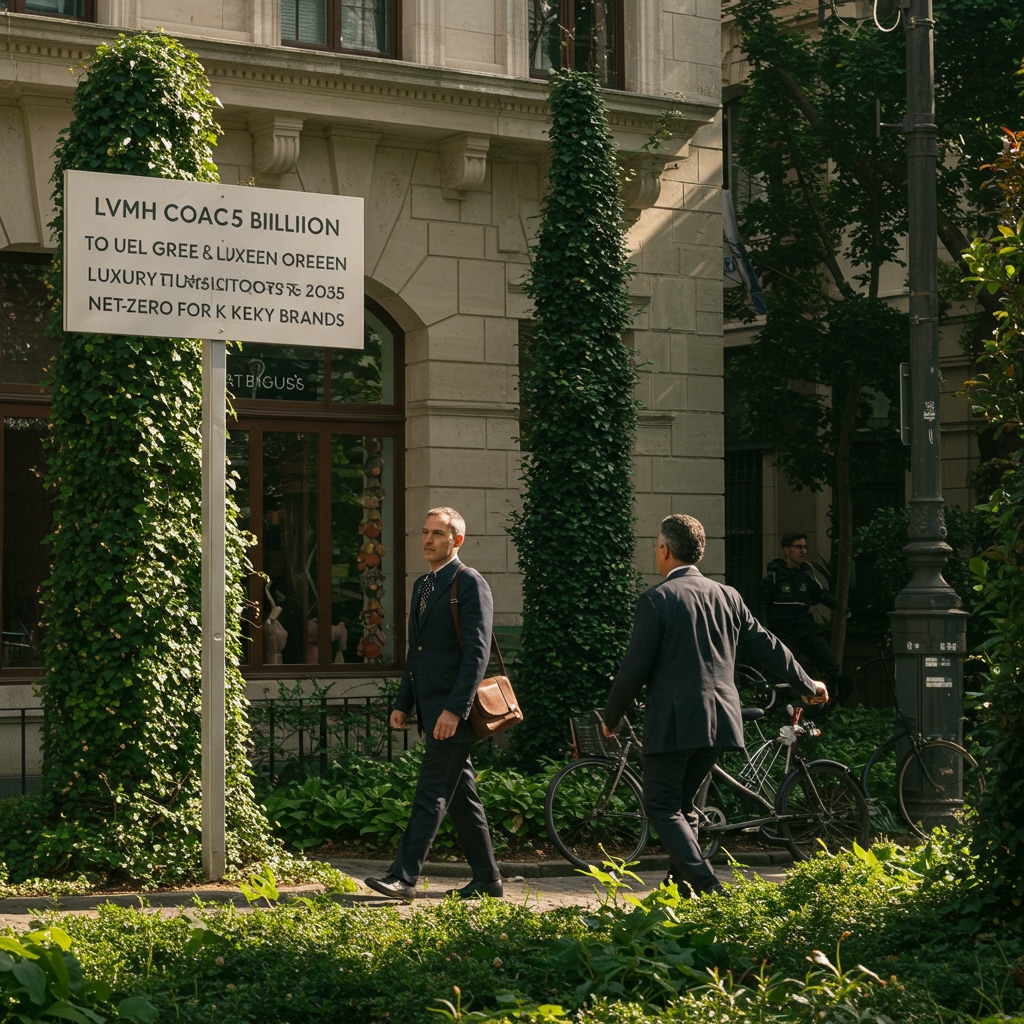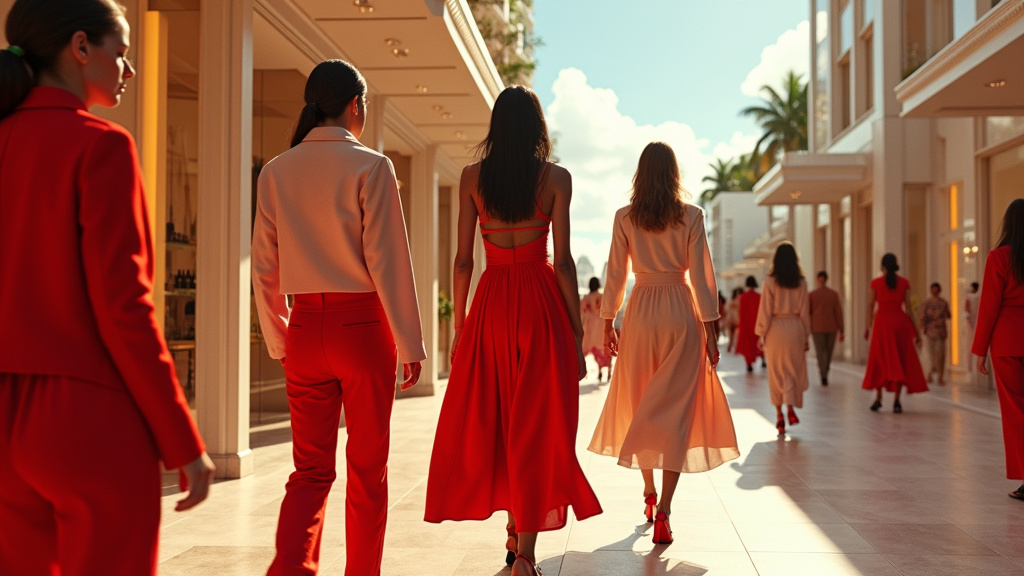LVMH Unveils Major \u20AC5 Billion Sustainability Acceleration Plan
Paris, France \u2013 April 18, 2025 \u2013 LVMH Mo\u00ebt Hennessy Louis Vuitton SE, the world’s leading luxury conglomerate, today announced a landmark commitment marking a significant escalation in its environmental strategy. The group is dedicating an unprecedented \u20ac5 billion investment over the next five years specifically towards accelerating sustainability initiatives across its vast global network and intricate supply chain. This substantial financial pledge underscores LVMH’s resolve to transition towards a more sustainable and circular future, responding to escalating global environmental challenges and increasing stakeholder expectations.
This ambitious investment is strategically focused on two primary pillars: the widespread adoption and scaling of innovative circular fashion technologies and a rapid transition to harnessing 100% renewable energy sources across its diverse portfolio of maisons. The group’s comprehensive environmental roadmap is anchored by a bold target: achieving net-zero carbon emissions by 2035. This ambitious timeline is set for key brands within the LVMH stable, including its most prominent flagship labels such as Dior, Louis Vuitton, and Celine.
The announcement comes at a time when the luxury sector faces intensified scrutiny regarding its environmental footprint. Growing pressure from environmentally conscious consumers, particularly younger demographics, and increasingly vocal investors demanding greater transparency and tangible action on environmental impact are reshaping industry priorities. LVMH’s \u20ac5 billion commitment positions the group as a frontrunner in addressing these pressures head-on, signalling a deep integration of environmental responsibility into its core business strategy and long-term growth trajectory.
Investment Breakdown and Strategic Focus
The \u20ac5 billion allocated over the next five years (2025-2029) represents a substantial portion of LVMH’s projected capital expenditure, signalling the critical importance placed on environmental performance. While the exact breakdown of the investment across specific initiatives will likely unfold over time, the group has clearly articulated its priority areas. A significant portion is expected to be channeled into research and development, as well as the operational integration of advanced circularity principles. This includes exploring and implementing technologies for material recycling, upcycling, and designing products with their end-of-life in mind, facilitating easier disassembly and material recovery.
The focus on circular fashion technologies aims to drastically reduce waste generation throughout the value chain, from sourcing raw materials to product manufacturing, distribution, and consumer use. This could involve investment in sophisticated sorting and recycling facilities, partnerships with textile innovation companies developing bio-based or recycled materials, and the establishment of robust take-back and repair programs for luxury goods. The goal is to create closed-loop systems that minimize the reliance on virgin resources and divert waste from landfills.
Simultaneously, the transition to 100% renewable energy sources is a cornerstone of the plan to achieve net-zero emissions. This will require significant investment in on-site renewable energy generation (such as solar panels on manufacturing facilities and stores), power purchase agreements for off-site clean energy, and improving energy efficiency across all operations. This initiative spans manufacturing sites, logistics centres, administrative offices, and the extensive global retail network of LVMH’s brands. Shifting to renewables not only reduces direct emissions but also strengthens energy security and operational resilience.
Net-Zero by 2035: An Ambitious Target
Setting a net-zero target for 2035 for core brands like Dior, Louis Vuitton, and Celine demonstrates a commitment to rapid decarbonization. Achieving net-zero typically involves reducing greenhouse gas emissions as much as possible and then offsetting any remaining emissions through verified carbon removal projects. The \u20ac5 billion investment is intended to drive the necessary operational and technological changes to achieve the vast majority of this reduction, limiting the need for offsets.
The choice of 2035 as the target year positions LVMH ahead of many corporate net-zero commitments, which often target 2040 or 2050. This accelerated timeline reflects the urgency of climate action and potentially aims to set a new standard within the luxury industry. The success of this target will hinge on the effective implementation of the planned investments, the ability to scale new technologies quickly, and collaboration throughout the supply chain, which often involves numerous third-party suppliers and partners.
Industry Context and Future Outlook
LVMH’s announcement is not isolated but reflects a broader trend within the luxury and fashion industries towards greater sustainability. Competitors are also investing in green initiatives, but the scale of LVMH’s \u20ac5 billion commitment sets a new benchmark. The luxury market, built on principles of quality, longevity, and craftsmanship, faces the challenge of reconciling its high consumption model with environmental responsibility. This investment suggests LVMH sees sustainability not just as a compliance issue or risk mitigation strategy, but as a crucial element of future brand value and consumer connection.
The move is also a strategic response to the evolving regulatory landscape and increasing investor focus on Environmental, Social, and Governance (ESG) criteria. Financial institutions and shareholders are increasingly evaluating companies based on their sustainability performance, recognizing the long-term risks associated with environmental degradation and resource scarcity. By making this significant commitment, LVMH aims to enhance its ESG profile and attract responsible investment.
Over the next five years, stakeholders will closely monitor LVMH’s progress against its stated goals. The successful implementation of the \u20ac5 billion plan will likely serve as a case study for the luxury sector and beyond, demonstrating how substantial investment and strategic focus can drive meaningful environmental change within complex global supply chains. The ambition to reach net-zero for flagship brands like Dior, Louis Vuitton, and Celine by 2035 is a powerful statement, signalling a fundamental shift in how the world’s largest luxury group intends to balance growth with environmental stewardship in the decades to come.





